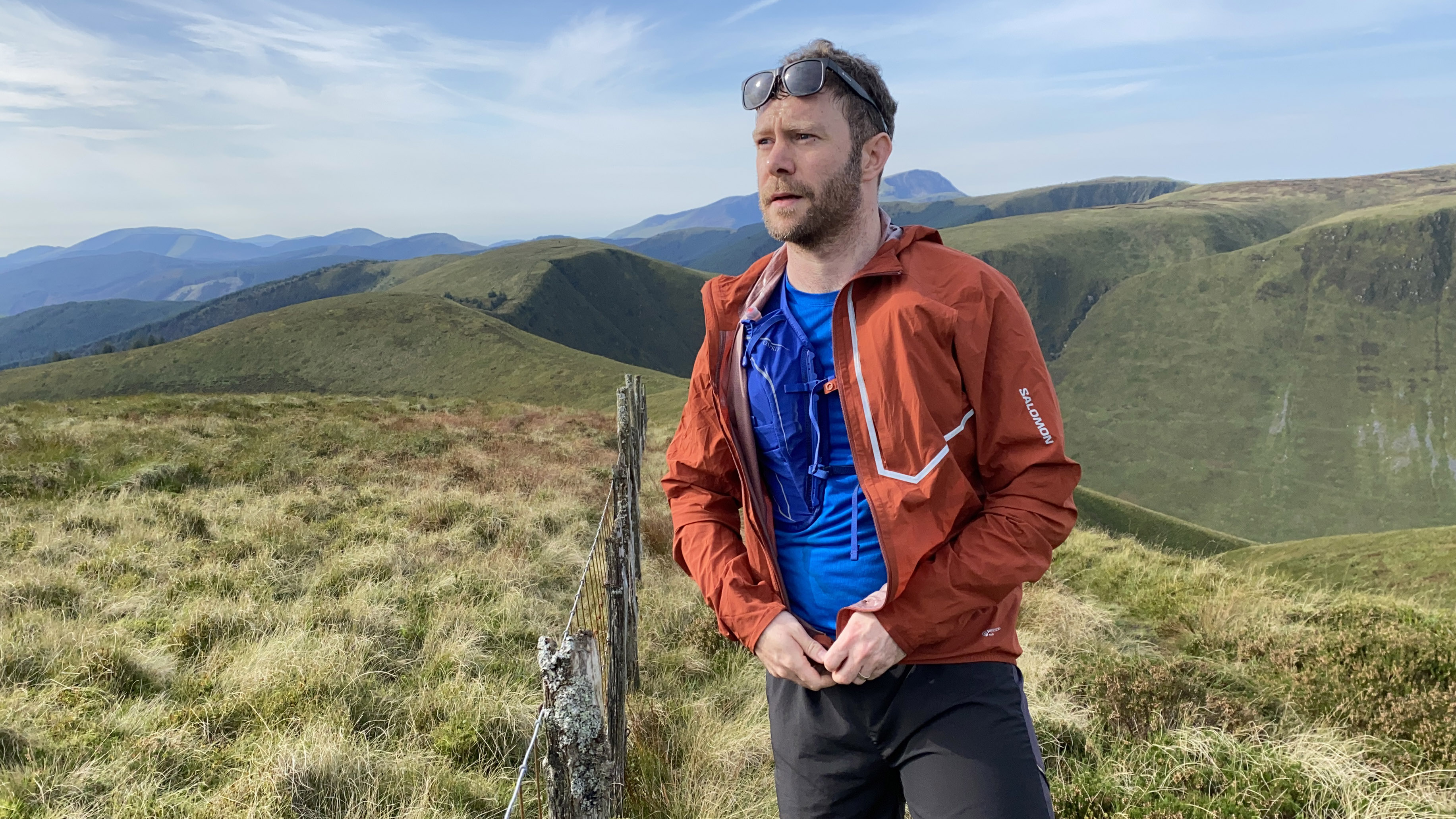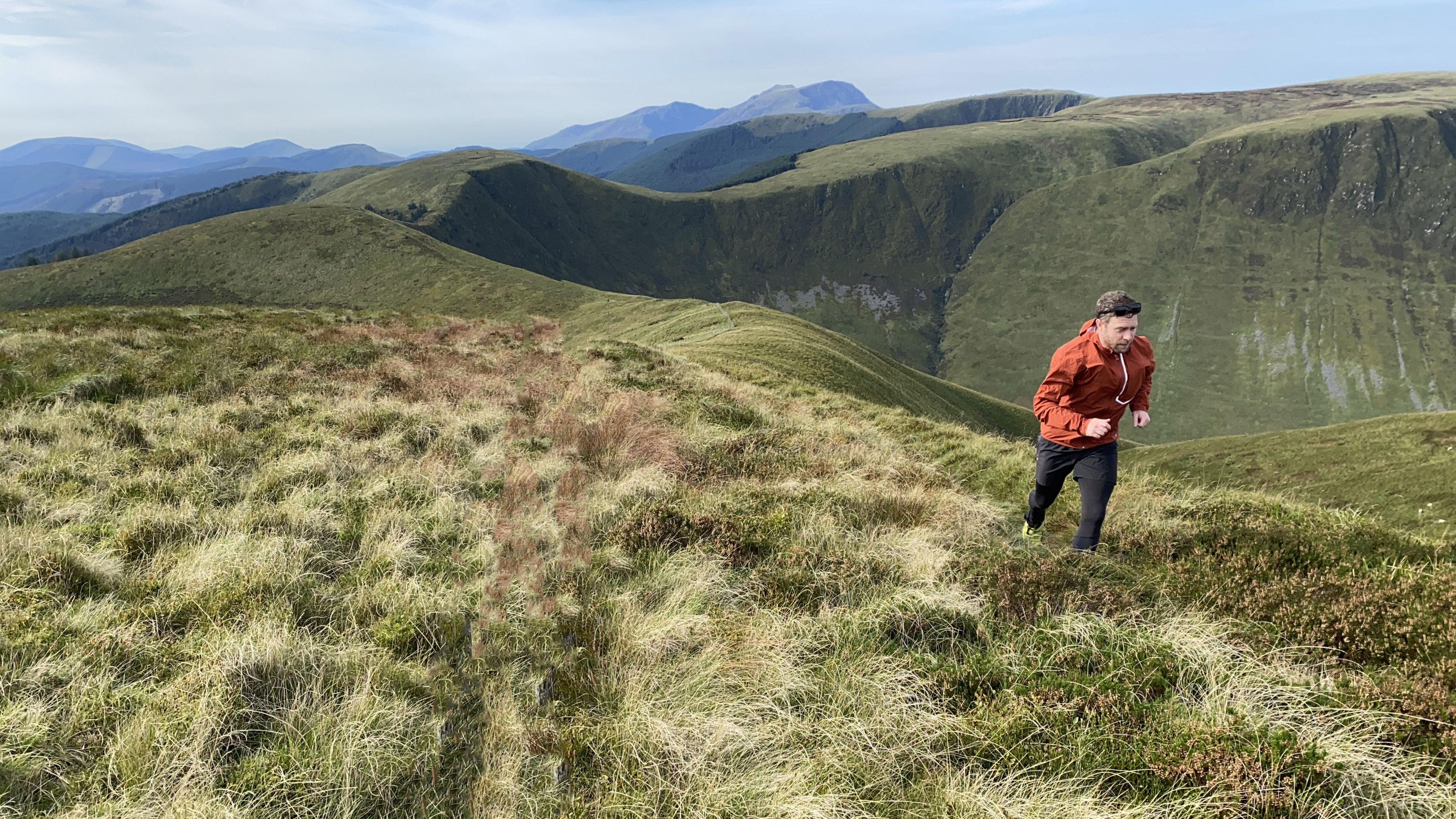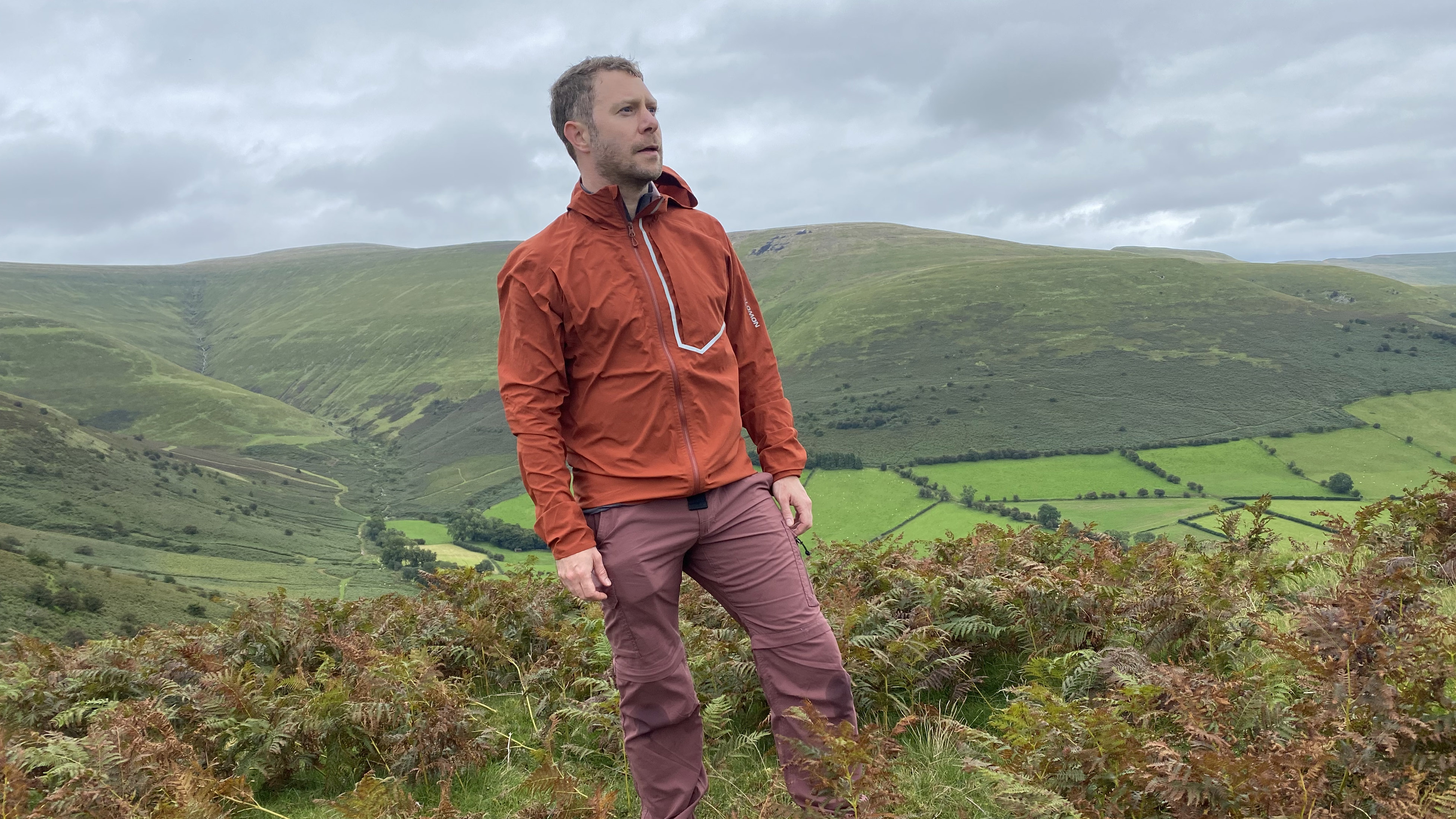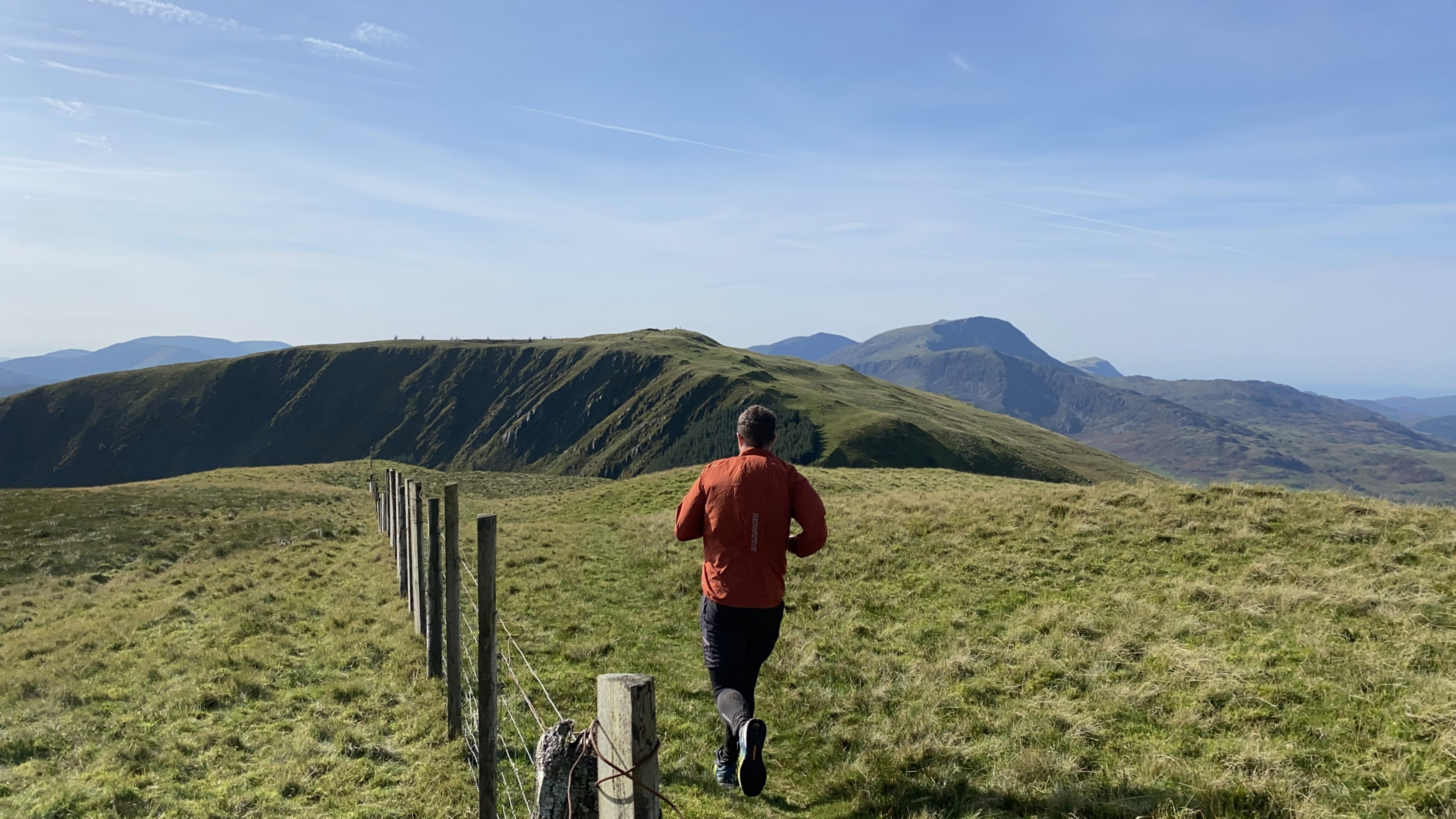Advnture Verdict
Take the Bonatti Trail jacket for a run in cool conditions and you’ll get the best out of it. It hits the sweet spot for an adventure runners’ jacket in terms of lightweight and packable qualities, combined with decent weatherproofing. It’s not as durable nor as protective as a hiker’s hard shell, but then it’s not meant to be. You’ll also find yourself reaching for this smart looking and practical jacket for everyday use.
Pros
- +
Looks great
- +
Lightweight for a waterproof
- +
Reflective detailing
- +
Fit allows wear with hydration pack
- +
Highly packable
- +
Nicely breathable
Cons
- -
Not as waterproof as some
- -
Front zip can be fiddly
- -
Lighter windbreakers exist
- -
Hood isn’t helmet compatible
You can trust Advnture
Named after the legendary Italian alpinist Walter Bonatti, Salomon’s Bonatti range is designed to be ‘ultralightweight, practical and packable’, aimed squarely at runners looking to brave tough conditions but not wanting the weight penalty of a heavier clothing. The most expensive jacket in the range, the Bonatti Trail, features a premium 2.5-layer Pertex Shield fabric and is designed to take on the sort of tough conditions skyrunners come up against.
Meet the reviewer

Upon discovering a love of the mountains in his mid-twenties, Alex made the transition from the road to the trails. He's always taken a fast and light approach to his time in the hills and for many years all his mountain days were completed in a pair of Salomon Speedcross trail shoes. Today, he's a qualified Mountain Leader and knows well the importance of quality kit for the high places.
Salomon Bonatti Trail Jacket: first impressions
The Bonatti Trail is a smart, modern looking running jacket, with angular reflective detailing and a slim fit. To wear, it feels like it’s barely there, weighing in at 190g, which is impressive for a jacket that claims to be waterproof. I could also scrunch it into a fist-sized ball, highlighting its packability. Straight away, I knew this would be a practical jacket that I’d use for more than just adventurous runs.

RRP: £210 (UK)
Weight: 195g / 6.9 oz
Gender specificity: Male / Female versions
Sizes: Men’s S to 2XL / Women’s
Fabric: Pertex Shield – 2.5 Layer Ripstop Polyamide
Colors: Red Dhalia; Deep Black / White; Burnt Ochre / Carbon; Bering Sea
The Bonatti Trail is designed to accommodate up to a 12-liter hydration pack underneath. Towards the top of the jacket and beneath the front zip is a button closure that enables the wearer to partially unzip without having the jacket flapping about all over the place. This is great for both dumping heat on the go and for ease of access to the hydration pack.
To keep weight low, the hood is fairly minimal, designed to essentially hug the head, fitting snugly without the need of adjustable cords and the like. The downside is that it’s not really helmet compatible, but it’s not intended as a mountaineers’ jacket in any case.

The main fabric is a 2.5-layer polyamide, boasting Pertex Shield waterproof protection. Lighter and more breathable than a standard Gore-Tex membrane, Pertex Shield is also wonderfully packable, ticking plenty of boxes for trail runners and adventure racers. However, it’s not as durable and doesn’t boast the robust “You shall not pass!” level of waterproofing experienced with Gore-Tex jackets.
However, as you’d expect, the jacket is also treated with a durable water repellent (DWR) coating, to assist the Pertex Shield in its mission to repel downpours. So, this is still a very water-resistant package that’ll cope with most conditions for the duration of a run. Potential weak points are also reinforced to a degree, such as storm flaps beneath the front zip and over the chest pocket.
As well as being lighter and more breathable, the main fabric also has a degree of elasticity, making the Bonatti Trail much less rigid than a traditional waterproof. There’s also more elastic at the cuffs and the dropped back hem, which keeps chilly updrafts at bay.
All the latest inspiration, tips and guides to help you plan your next Advnture!
Salomon Bonatti Trail Jacket: on the trails
I’ve been testing the Bonatti for several months, donning it on hilly runs and hikes in Wales’ Bannau Brycheiniog (Brecon Beacons) and Eryri (Snowdonia) National Parks, wearing it on hikes along England’s south coast and in the Lake District National Park and frequently wearing it around my home city of Bristol, which is no stranger to the rain.
Let’s start with what it’s been designed for – wild runs. On those cold fall days, the sort where the wind has brought Scandinavian chilliness across the North Sea, the Bonatti is a blessing, particularly when hitting high ridges exposed to the full brunt of the elements. In warmer conditions, breathability suffers a little and moisture accumulates on the inside. But, to be honest, the only reason I had it on in these warmer conditions in the first place was to test it – I wouldn’t usually have worn a jacket at all in such heat.

So, back to cooler climes – it’s a magnificent yet breathable windbreaker and the ability to open up the front zip to dump heat, while the Smart Vent button closure stops the jacket from flapping about, is a nice touch. This system also enabled me quick access to my hydration pack. The front zip was often a bit fiddly, a minor qualm that I often find occurs with uberlight jackets.
As well as being lightweight, another advantage of the softshell face fabric is elasticity, which makes the jacket much more pleasant to run in than a hard shell. I never felt as though my movement was being restricted at any point during the test period.
Taking on the wet
All this is good and well, but when it comes down to it, a waterproof jacket is judged on its ability to see off the rain.
Ah! The beading of water on the surface of a new waterproof jacket is always a welcome sight, giving an impression of impregnability. This occurs thanks to the layer of durable water repellent (DWR) that the main face fabric is treated with. Imagine a heavily armoured starship under heavy bombardment from an alien battleship. In this analogy, the Pertex Shield fabric is the armour and the DWR is the protective force field that the missiles (the rain) bounce off.

Did this level of protective shielding meant that I managed to live long and prosper on the rainy trails? Well, I found my DWR force field wore off after several wears in wet weather, perhaps a little faster than the average waterproof jacket. Of course, I still had the heavy armour of the waterproof fabric, but each onslaught from the rain now had a detrimental effect on my mothership, wetting out the fabric. This doesn’t mean water was seeping through – yet – but the wetting out of a jacket’s fabric severely impacts its breathability. In short, my missions to boldly go where no trail runner has gone before were now compromised a little.
Nevertheless, the Bonatti was keeping me broadly dry and did so for the vast majority of my runs. It was only when I was out for longer periods in consistent downpours that it began to struggle – though I should stress that this is to be expected for a softshell running jacket of this weight. I found it was also wonderfully fast drying – good news if you are fortunate enough to escape the rain while still on the trail. As well as all of this, once you notice your jacket beginning to wet out, you can always launder it with a reproofer, such as Nikwax’s TX Direct Wash In, which essentially applies a new DWR force field for future exploratory forays.

With these findings in mind, the Bonatti isn’t a jacket I’d recommend for winter or shoulder season hiking, or for longer mountain marathons, where there’s always the chance of being out in the rain for a substantial amount of time. However, if my run was only going to be a matter of hours, I wouldn’t hesitate to put it on, even if the forecast was unfavorable.
A great option for everyday wear
As well as being great for adventurous runs, I found myself reaching for the Bonatti Trail time and time again for everyday use. As a softshell, it’s lighter, more comfortable and more packable than most other waterproof jackets, making it perfect for stuffing in my pack when heading for a local walk or to the shops. The only things it’s missing are handwarmer pockets, but I totally understand this omission, as they’d have added weight and represented weaknesses in the jacket’s ability to repel the elements.

So, for adventurous runs, summer hiking and everyday use, the Bonatti really shines. It’s only if I was heading out into challenging conditions at a slower pace or for a considerable length of time that I’d swap it out for a more robust waterproof hard shell.
Alex is a freelance adventure writer and mountain leader with an insatiable passion for the mountains. A Cumbrian born and bred, his native English Lake District has a special place in his heart, though he is at least equally happy in North Wales, the Scottish Highlands or the European Alps. Through his hiking, mountaineering, climbing and trail running adventures, Alex aims to inspire others to get outdoors. He's the former President of the London Mountaineering Club, is training to become a winter mountain leader, looking to finally finish bagging all the Wainwright fells of the Lake District and is always keen to head to the 4,000-meter peaks of the Alps. www.alexfoxfield.com


